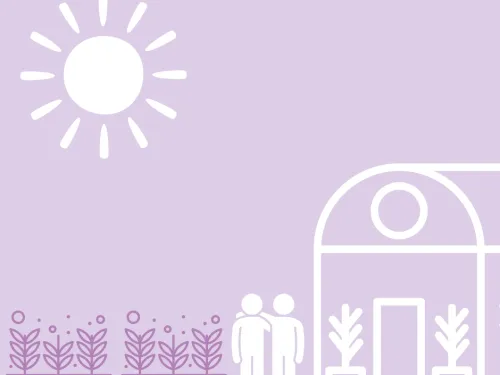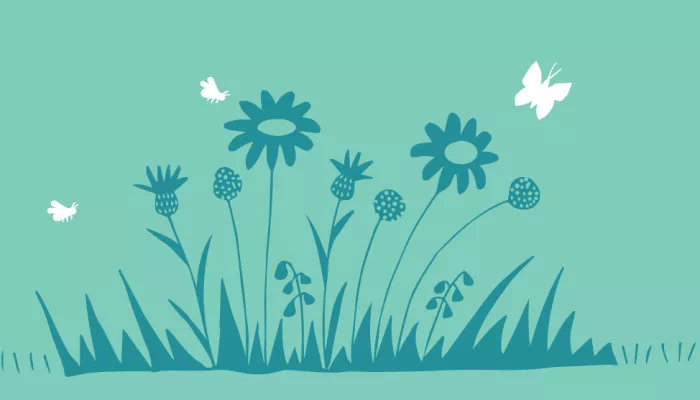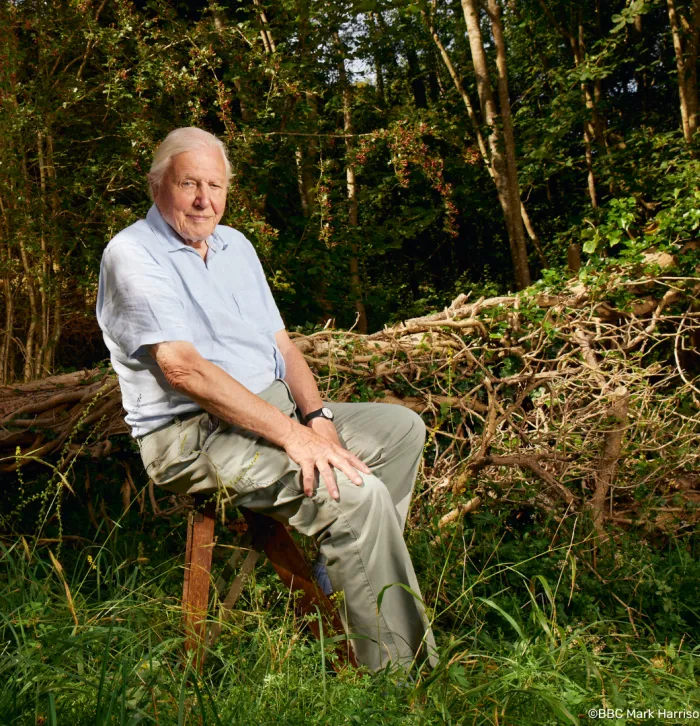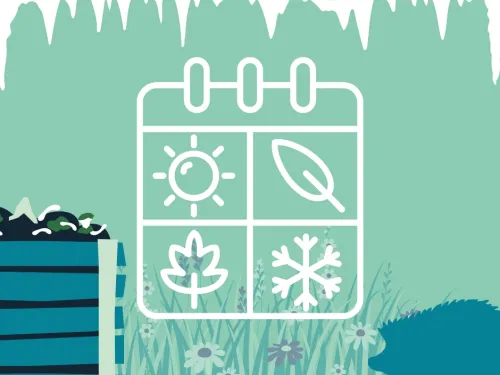
Sustainable food growing
On this page you'll find useful tips on how to grow food in ways that help your community and the biodiversity around it

Solitary bees are important pollinators and a gardener’s friend. Help them by building a bee hotel for your home or garden and watch them buzz happily about their business.
Long grass, peppered with flowers, is one of the rarest habitats in our well-tended gardens, yet it is incredibly beneficial for wildlife. Patches of long grass encourage different plant species to grow, help insects to thrive and create feeding opportunities for birds and small mammals.
So simply let nature move in! Set aside some lawn, leaving it to grow, and wait to see what arrives. The less pristine the lawn, the more promising it is for wildlife. You can raise the cutters on your mower to make some paths and leave the rest of the mowing until July or August after plants have flowered.
Let nature move in or sow your own wildflower patch; bring a touch of wild to your garden
You can create a wildflower area from scratch on bare ground. Pick a poor patch of ground that hasn’t been cultivated recently. Wildflower meadows establish best on unproductive soil. It’s worth checking what sort of soil you have and its pH before you choose which seeds to sow; wildflower seed merchants supply mixes suitable for various soil types and situations.
If your soil fertility is too high for perennial wildflowers to flourish, consider sowing a cornfield annual mix that includes plants like cornflower, corn poppy, corn marigold and corncockle, with some barley and wheat seed to add an authentic touch!
During the first year, it is essential to get the mowing regime right. Cut to 5-7 cm whenever the height reaches 10-20 cm. The number of mows required can range from one to four. Control assertive weeds like thistles, nettles and docks by hand-weeding.
After this, a couple of cuts a year should be enough. Once in late July/early August and then again in early autumn. After mowing, always leave the clippings for a couple of days to drop any seed, then rake up and remove to keep soil fertility down.


On this page you'll find useful tips on how to grow food in ways that help your community and the biodiversity around it

In this page you'll find an array of information to how to best help wildlife over the changing seasons each year

On this page you'll find exciting information on getting involved with citizen science project in your own home and community

On this page you'll find useful information on how to take environmental action from home and in your community

On this page you'll find useful information on how to reach out to others about nature & the environment

On this page you'll find excellent tips on how to shop sustainably and be mindful of what you're eating